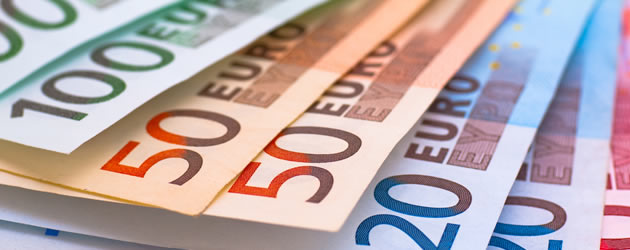UPDATE
The Pound Sterling to Euro (GBP/EUR) exchange rate advanced by around 0.5% on Tuesday afternoon.
After Eurozone inflation data stagnated, missing the market consensus of a slight rise, the single currency dived versus most of its major peers. The Pound, meanwhile, advanced versus the common currency after domestic data showed British construction output bettered expectations.
The Pound Sterling to Euro (GBP/EUR) exchange rate is currently trending in the region of 1.3656.
Yesterday…
GBP/EUR Conversion Rate Predicted to Edge Lower after UK Manufacturing Unexpectedly Weakened
The Pound Sterling to Euro (GBP/EUR) exchange rate edged lower by around -0.1% on Monday morning.
Having started the year with a comparatively weak trade-weight, the Pound advanced versus the majority of its most traded currency rivals on Monday as traders took advantage of the low-valued Sterling. Aiding the appreciation was mostly positive domestic data results. November’s Mortgage Approvals, Net Consumer Credit and Net Lending Securities on Dwellings all bettered the respective forecasts. However, gains were somewhat pegged back after December’s Markit Manufacturing PMI failed to meet with expectations of a rise from 52.5 to 52.8, with the actual result dropping to 51.9.
Senior Markit Economist Rob Dobson stated; ‘The UK manufacturing sector ended 2015 on a disappointing note, with its rate of growth slowing further from October’s recent high back down towards the stagnation mark. This suggests that industry will make, at best, only a marginal positive contribution to broader economic growth in the final quarter of the year. Although this would be an improvement on the second and third quarters, it does also suggest that manufacturing output over 2015 as a whole may be below the level achieved in 2014. With the latest revisions to official data also suggesting that GDP growth earlier in the year was softer than previously thought, the emphasis has really shifted to other sectors of the economy if the rate of expansion for the year as a whole is to come in close to the OBR forecast as outlined in the Autumn Statement.’
The Pound Sterling to Euro (GBP/EUR) exchange rate is currently trending in the region of 1.3548.
EUR/GBP Conversion Rate Predicted to Hold Gains ahead of German Inflation Data
The Euro (EUR) advanced versus nearly all of its most traded currency rivals on Monday morning. The appreciation can be linked to US Dollar weakness thanks to negative EUR/USD correlation. Also aiding the appreciation was mostly positive domestic data results. December’s Italian, German and Eurozone Manufacturing PMIs all bettered the respective market consensuses. However, December’s French Manufacturing PMI unexpectedly dropped from 51.1 to 51.4.
In response to Eurozone manufacturing output, Rob Dobson stated; ‘The end of 2015 saw the Eurozone manufacturing recovery gain further traction, with rates of expansion in production and new orders over the final quarter besting those of quarter three. The sector is therefore likely to make a meaningful positive contribution to the Euro GDP numbers for quarter four. Survey data also indicate that manufacturing growth over 2015 as a whole averaged above those achieved in each of the previous three years.’
‘Furthermore, with the Greek PMI rising back into growth territory in December, we are now seeing concurrent expansions signalled in all of the surveyed nations for the first time since April 2014. Italy remained the leading light in December, while accelerated growth in Germany and France added welcome buoyancy to the region’s manufacturing performance. Solid job creation in the sector should also help chip away at the sustained high levels of unemployment still being experienced by some nations.’
The Pound Sterling to Euro (GBP/EUR) exchange rate dropped to a low of 1.3461 during Monday’s European session.
Pound Sterling to Euro (GBP/EUR) Exchange Rate Forecast to Fluctuate on German and US Data
German inflation data, due for publication later on Monday afternoon, has the potential to provoke significant Euro volatility today. In addition, thanks to EUR/USD negative correlation, the single currency is likely to see changes in response to US data which includes December’s ISM Manufacturing.
In the long term both the Pound and Euro are predicted to weaken by many analysts. The National Institute of Economic and Social Research (NIESR) warned that by 2017 a third of Eurozone countries will be ineligible for the ECB’s bond-buying programme. This means that the ECB will be stuck between a rock and a hard place if inflation doesn’t significantly pick up over the course of 2016. Across the Channel, meanwhile, the forthcoming referendum on the UK’s European Union membership is likely to have a significant impact on demand for the British asset.
The Pound Sterling to Euro (GBP/EUR) exchange rate reached a high of 1.3591 during Monday’s European session.



